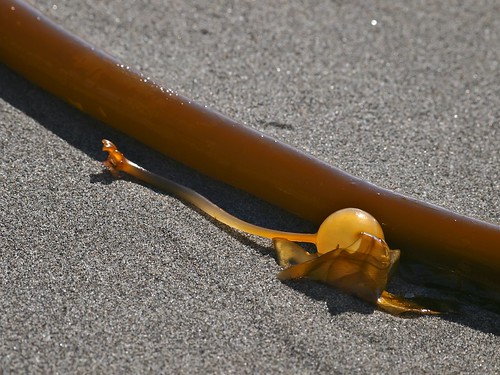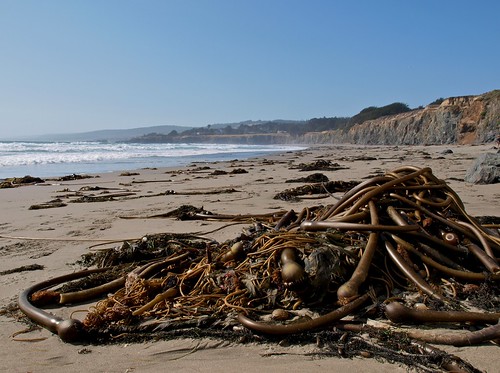Bull Kelp – Nereocystis luetkeana
I never appreciated kelp until, 1) I first saw this particular monster of a kelp, and 2) I saw close-ups of kelp shot by better nature photographers than I — capturing the golden palette of this gargantuan plant.
Here’s what I know about bull kelp:
It’s the ocean’s mammoth seaweed — an annual speed grower. It can sprout 10 inches in a day and reach lengths of more than 100 feet. On the Sonoma and Mendocino Coast where these shots were taken, beaches, pounded by incessant surf, are often strewn with the remnants of these vital kelp forests.
Kelp provides shelter for sea creatures and a haven for water birds — and also for the sea otters you’ll find farther south near Monterey and Morro Bay. Carbon monoxide is one component of the bulbs that float on the ends of the long bull whips. According to the Monterey Bay Aquarium, up to 10 percent of the gas in these floats is CO.
The translucence of the stipe (stem) makes for amber renditions in golden-hour light.
But the color nuances are lost in the heaps of discarded canopy that once shaded the Pacific floor.
Bountiful bull kelp, although a critical component of the oceanic ecosystem, can be a hazard for human abalone divers who are required by law to dive without air tanks. There have been incidents where abalone divers drowned as a result of this entanglement.
Related:
- Sea-Combers: Seaweed harvesters may lose their livelihood to marine protections
From Terrain Magazine, Summer 2009 Issue




Leave A Comment